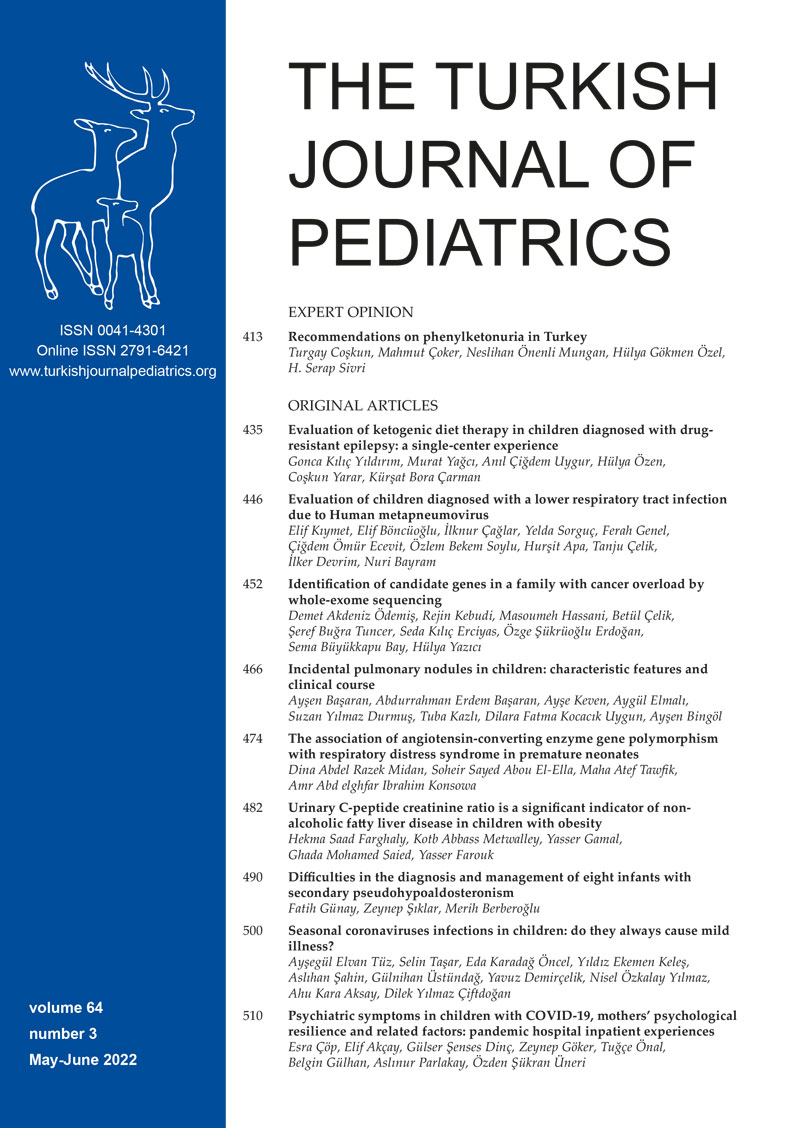Abstract
Background. Nonalcoholic fatty liver disease (NAFLD) is the commonest etiology of chronic hepatic problems in children with obesity. This study aimed to assess whether urinary C-peptide creatinine ratio (UCPCR) might be a potential indicator of NAFLD in obese children.
Methods. The study included 240 children with simple obesity. Hepatic ultrasonic examination, anthropometric and laboratory measurements including fasting plasma glucose, fasting insulin, fasting C peptide, liver, renal profile, lipid profile, and UCPCR were obtained in all cases. According to the results of the hepatic ultrasonography, cases were classified into two categories, those with NAFLD (n=98) and without NAFLD (n= 142).
Results. In cases with NAFLD, UCPCR was significantly higher than those without NAFLD (P < 0.001). A significant positive correlation between UCPCR and waist circumference (WC SDS), triglyceride, fasting C-peptide, HOMA-IR and alanine aminotransferase (ALT) was found (P < 0.001 for each). Adjusting for other variables, UCPCR was the most significant predictor of NAFLD in children with obesity with higher odds ratio (OR = 3.26) than fasting C peptide (OR = 2.87), triglyceride (OR = 1.89), ALT (OR = 2.20), WC SDS (OR = 1.32) and age (OR=1.27) . UCPCR cut-off value of 0.755 nmol/mmol was able to discriminate cases with NAFLD from those without NAFLD with a sensitivity of 95%, a specificity of 87%.
Conclusions. We concluded that UCPCR is a useful, practical and non-invasive predictor of NAFLD in children with obesity with high sensitivity and specificity.
Keywords: fasting C- peptide, insulin resistance, non-alcoholic fatty liver disease, obesity, urinary C-peptide creatinine ratio
Copyright and license
Copyright © 2022 The Author(s). This is an open access article distributed under the Creative Commons Attribution License (CC BY), which permits unrestricted use, distribution, and reproduction in any medium or format, provided the original work is properly cited.














